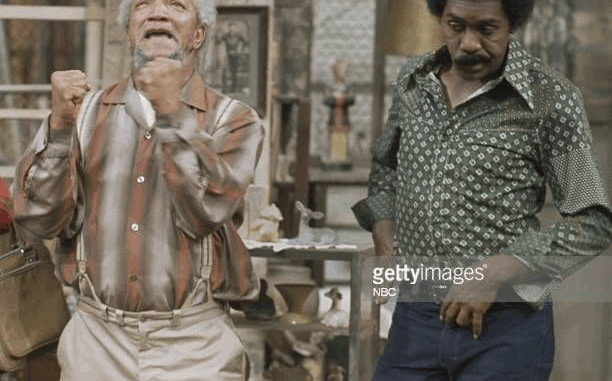
While Sanford and Son is beloved for its humor and heart, there’s one episode that remains deeply controversial—and for good reason. Tucked into Season 2 is a storyline that, in hindsight, many fans and critics agree should never have made it to air.
The episode, titled “Lamont, Is That You?”, tried to tackle homosexuality—but did so with a level of ignorance and stereotyping that turned what could’ve been a progressive moment into a national embarrassment. What begins as a misunderstanding—Fred thinking Lamont might be gay—quickly spirals into a series of offensive jokes, caricatures, and uncomfortable innuendo that hasn’t aged well at all.
At the time, few mainstream sitcoms even dared mention LGBTQ+ topics. So when Sanford and Son aired this episode, many viewers were initially curious to see how it would handle the subject. But instead of empathy or nuance, what they got was a barrage of dated stereotypes. Fred’s exaggerated reaction, his disgust, and even physical revulsion toward the idea that Lamont could be gay turned what should have been a teachable moment into a cringe-worthy spectacle.
Behind the scenes, NBC received hundreds of complaint letters in the weeks that followed the broadcast. LGBTQ+ advocacy groups demanded an apology from the network. Some even called for the episode to be pulled from syndication.
What’s more surprising is that, according to archived production notes, the original draft of the script was actually much worse. It reportedly included an extended scene where Fred tries to “cure” Lamont by setting him up with multiple women in humiliating ways. That part was removed only after a senior executive at NBC expressed discomfort with how far it went.
Redd Foxx, known for pushing boundaries, defended the episode in interviews at the time, arguing that it reflected how “real folks in the neighborhood” might talk. But Demond Wilson, who played Lamont, stayed noticeably silent in press junkets promoting the season—fueling speculation that he didn’t support how the subject was portrayed.

In reruns, the episode has quietly slipped through the cracks. While it still appears in some syndication packages, certain networks and streaming services have chosen to skip or flag it with disclaimers. Fans who rewatch the series today often call it “the most uncomfortable episode,” and some even skip it altogether.
The damage was subtle but lasting. Many believe this episode cemented Sanford and Son as a product of its time—brilliant in many ways, but also deeply flawed in its handling of sensitive issues. It also scared the writers off from tackling similar themes again.
In the end, the episode stands as a painful reminder of television’s past—when jokes came at the expense of marginalized voices, and laughs were prioritized over compassion. For many fans, it’s not just a misstep—it’s the moment Sanford and Son betrayed its better instincts.
